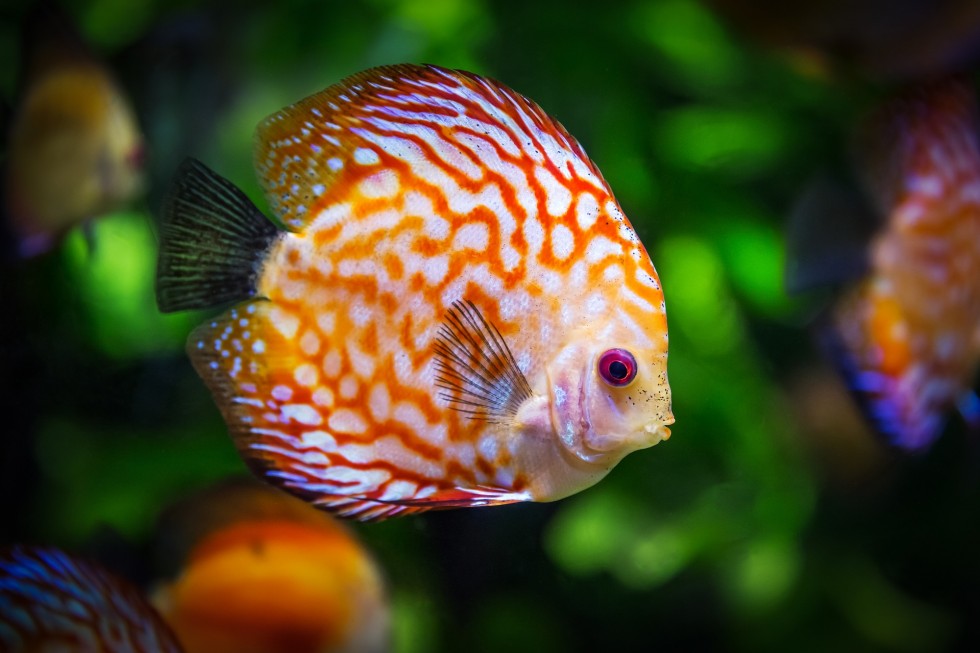Different types of fish are not always live together in peace and quiet. Fish compatibility becomes one of the most challenging issues for the novice.
Those, who think stocking their tank is as easy as ABC, may be absolutely wrong. Choosing a compatible fish for your aquarium is a crucial step in creating and maintaining the friendly atmosphere, which requires some knowledge.
If you are one of billions of pet lovers and are going to have a beautiful aquarium, that’s pretty an amazing idea. It has been proved that these pets positively influence human nervous system, as well as bring much pleasure when leisurely flowing on the other side of the glass.
Although getting such an adorable scene needs some of aquarium owner’s efforts. See, fish can’t always ensure serenity and good discipline only to satisfy a human being.
In view of this, you should know some basics about keeping different types of fish together. Our article will teach you how to organize their peaceful coexistence.
So, selecting a compatible fish for creating healthy community should be done carefully. It is especially subject to people, who only start dealing with their new new tank hobby.
Considering some important criteria will allow you understand which species can live together. This guide below will provide you with general information needed in order to make sure you leave no detail to chance.
That’s why, before dropping in your local pet shop, read our helpful tips to avoid many mistakes.
Tips you should know when choosing compatible fish
-
Start with an investigation
From the very beginning you will need to have a little research to be conducted. There are plenty of different sources of all necessary information today.
Search in the world web, specialized books, consult experienced aquarists in hobby clubs or hire aquarium professionals.
Who knows, maybe your hobby will become something more in the future. For example, you will put on your knowledge into practice and that will enable you to set up your own profitable business.
-
Mind the temperament and behavior
All fishies can be divided into some categories as to their temperament, which in turn, determines fish interactions. While some can harmoniously fit in with the rest of the staff, others should be kept separately.
Some species among which are guppies, danios, mollies, swordtails platies and others feel comfortable in small groups and can easily get on with other tank habitants.
Semi-aggressive fish is the next category. They may occasionally demonstrate aggressive behavior, yet in general tend to represent no danger to others.
This category includes sharks, barbs, loaches, eels and gouramis and other types. If you want one of them to join your community, first make sure you will be able to provide other fish with enough free space.
Semi- aggressive males may set their own territorial borders in tank and attack smaller fish to protect it.
Limit the number of males and insure tank mates with places to hide so that no disaster will occur.
As you may already guess, the next type is a group of aggressive fish. They are usually large and always exhibit very aggressive behavior when it comes to their territory.
Most notably such fish like African cichlids, big catfish, plecostomus and others attack the representatives of the same species. Yet, they can muddle their mates together with other look-alike tank pets.
As a consequence, buying aggressive fish is not recommended for beginning hobbyists. You will need some time to understand your community, but with this category it won’t be done easily.
-
Provide enough free space
Always remember that enough living space is absolutely critical for every creature. Your fishes are not an exception. It will be hard for them to thrive in too occupied aquarium.
Overstocking can be the reason of frequent disturbances. As you figured out from previous tip, your tank community should be based on compatibility according to particular categories and their characteristics.
Besides, too many fish mates will create a mess and an effect of permanent bustle, instead of giving you the opportunity to enjoy tranquility and grace.
-
Don’t fully rely on store stuff
When buying fish for you aquarium, don’t rely completely on pet shop’s assistants. Many of them are not specialists.
You should better get all necessary information by searching it yourself before making a purchase. Things can often get confused, so think of finding a suitable professional to solve your problem.Leave your request here
-
Avoid combining big and small fish
In spite of the fact, that aggressive groups represent the main danger for others, there is another concern you should keep in mind.
Large fish can treat smaller ones as a food in some cases. Thereby, make sure your fish don’t differ essentially in size.
-
Think of care requirements
The last but not the least is to provide all fish with a necessary care. As different types of them require different care and living environment, choose the fish that generally fits common needs.
For the matter of that, HireRush.com recommends you to remember about food, temperature and salinity in the tank, as well as water hardness.
Find out whether the fish require fresh or salt water, warm or cold temperature, hard or soft water conditions. Provide them with proper feeding.





